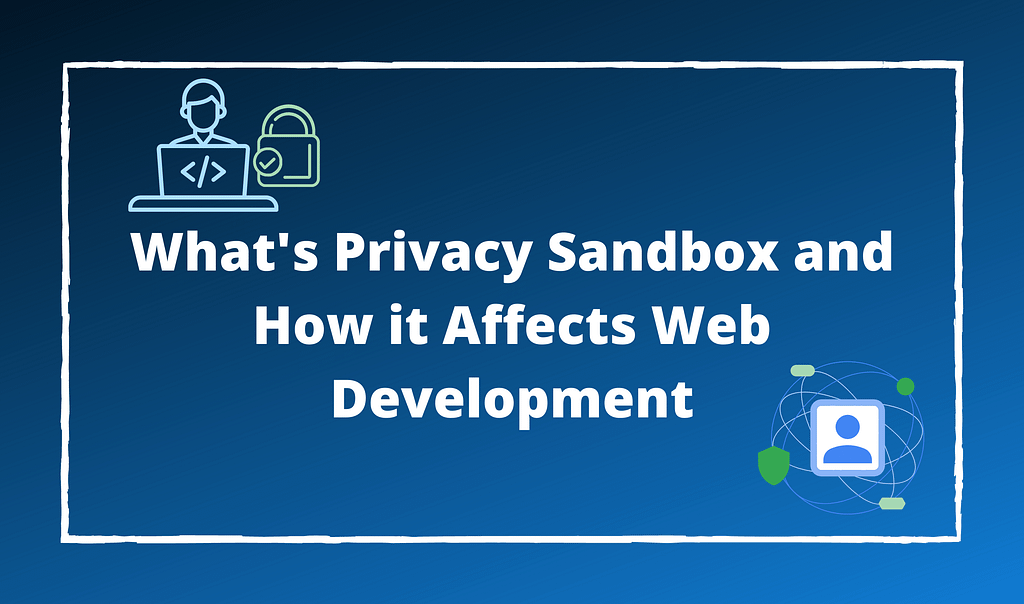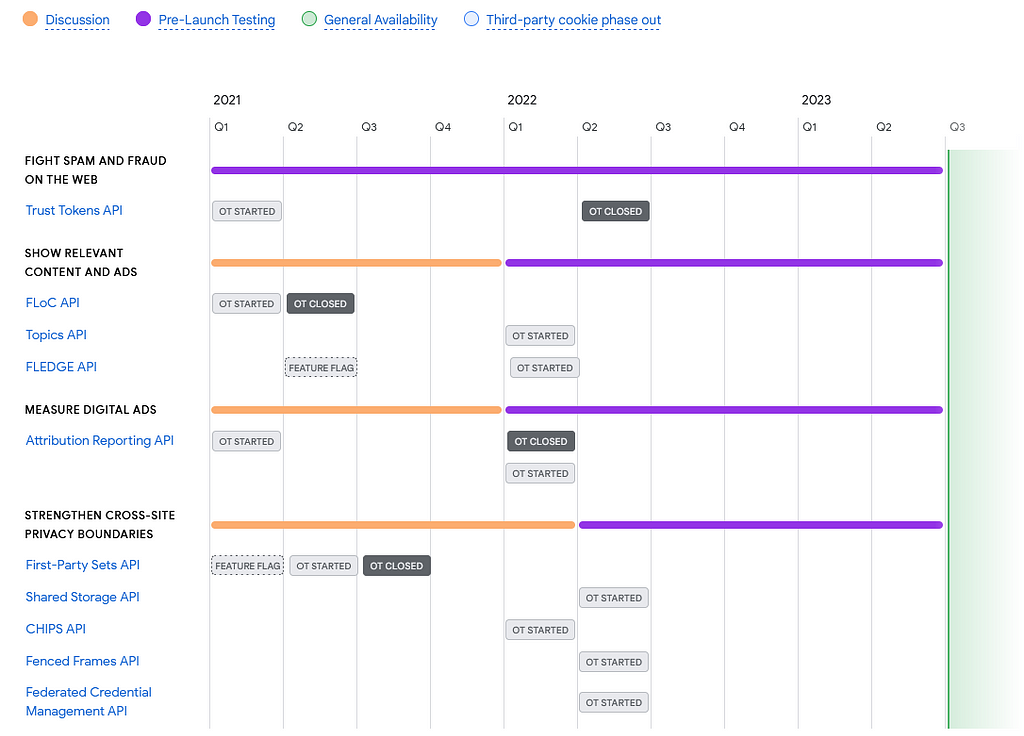This content originally appeared on Bits and Pieces - Medium and was authored by Lahiru Hewawasam
The implications of the privacy sandbox in development

Nowadays, privacy is one of the most talked about topics in the cyber realm due to the significance of data. Data is one key aspect that allows businesses to gain competitiveness over their competition. It takes the form of many unconventional routes while targeting and exploiting the billions of users that consume the services provided on the Internet.
Almost all the content on the Internet run advertisements to generate some form of revenue. It became the norm during times when data privacy wasn’t as established as it is today.
In the hopes of driving successful targeted content, businesses rely on trackers, often in the form of cookies. The seemingly harmless cookie within a browser can help online services track a user’s behaviour and build an identity for each user over time.
Even with the wide adoption of this method, the implications for the user’s privacy are a growing concern. With new regulations governing how companies can use this data, it is time to switch to a more privacy-driven approach.
To combat the growing concerns over user privacy, Google introduced the privacy sandbox, a cutting-edge initiative fighting the war against mass media marketing and advertising at the expense of compromising the users’ privacy.
What is a privacy sandbox?
The privacy sandbox is Google’s answer to combating the intrusiveness that cookies carry with them. It focuses on protecting the users’ privacy while allowing companies and developers to keep running a successful digital marking initiative.
This initiative builds upon core principles that reduce an organization’s ability to track a user’s activity across multiple web services or applications while sharing only the information required to run a successful advertisement campaign.
Since most Internet content is web applications, the initiative focuses on the web and the applications designed to run on Google’s Android operating system.
What does it strive to achieve?
Since the implications of privacy can span across various areas and categories, the privacy sandbox focuses its efforts on addressing the privacy concerns categorized into the following areas:
- Fight spam and fraud on the web
- Show relevant content and ads
- Measure digital ads
- Strengthen cross-site privacy boundaries
- Limit covert tracking
Each area is crucial in allowing digital marketing to succeed without compromising privacy.
Fight spam and fraud on the web
According to Imperva’s 2022 bad bot report, up to 42% of the internet traffic generated was from bots, out of which 27.7% came from bad or malicious bots that generate repetitive tasks that a human wouldn’t otherwise be able to recreate. Bad bot behaviour can range from a simple repetitive task to account takeovers.
The current solution brought up within the privacy sandbox initiative is building “Trust Tokens” that can help websites differentiate real users from bot activity. Websites that adopt this technology can issue trust tokens to web browsers by analyzing regular activity performed.
Other websites can then use this trust token to identify a real user from a bot. It is important to note that these trust tokens use encryption to keep the user’s identity safe by not allowing any part of the user’s activities to be correlated.
Show relevant content and ads
Blocking all tracking mechanisms would render the current method of targeted advertisement campaigns ineffective. However, the means to protect the user’s privacy must allow the web services to display targeted advertisements without compromising the user’s privacy.
Typical tracking techniques using third-party cookies involved sharing specific websites that a user visited with other web services. However, with the advancements of the “Topics API”, which is a part of the privacy sandbox initiative, users no longer need to share the websites they visit to allow targeted advertisements. Instead, the web browser can assign and identify “Topics”, which are categories based on the pages a user might visit.
“Topics” maintained by the web browser then allow web services to display targeted advertisements based on a category, such as sports, without sharing specific pages the user visited.
Measure digital ads
Just displaying targeted advertisements to users is not an effective way to conduct a successful campaign since many metrics determine the success rate for any campaign.
In most cases, web services use third-party cookies to obtain the necessary metrics. However, with the new initiatives blocking or restricting third-party cookies, these web services will be unable to gather the required metrics.
The privacy sandbox initiative brings about a new and innovative mechanism in the form of the “Attribution Reporting API” to enable these measurements without using third-party cookies, thus sustaining the user’s privacy.
The “Attribution Reporting API” allows advertisers to obtain the following metrics:
- Conversions of advert clicks and views
- Conversions of adverts in a first-party context where the publisher is serving their advertisements
- Conversion of adverts in a third-party iframe where the publisher is serving advertisements from third-parties
Strengthen cross-site privacy boundaries
Allowing or restricting access to cross-site tracking is usually not a simple decision. For example, some organizations may have multiple domains that use the same set of cookies to enable a seamless user experience while loading certain content. In these instances, restricting access to cross-site tracking would break the user experience and make their services less user-friendly.
The privacy sandbox initiative brings in the “First Party Sets” proposal that allows organizations to declare any domain belonging to the same organization, thus creating a “first-party set”. This declaration allows the browser to enable sharing tracking between the domains that belong to the organization while restricting access to domains outside of the “first-party set”, thus protecting the user’s privacy.
Limit covert tracking
Covert tracking poses an enormous risk to the user’s privacy due to its widespread and ungoverned approach. However, the privacy sandbox initiative proposes the following mitigative controls to preserve the user’s privacy:
- Enabling Same-Site cookies
- Reducing user agent hints
- Enabling DNS-over-HTTPS
These proposals may not directly impact the development or application workflows. However, the developers must be mindful of their methods to track users to ensure they don’t use techniques that jeopardize their privacy.
Timelines for these deployments
The privacy sandbox runs multiple proposals concurrently to speed up development, and the added advantage of these built-on public forums ensures transparency towards the timelines.
The following snippet from the official website shows the current status of each proposal and its deadlines.

Conclusion
This article explained the groundbreaking privacy sandbox initiative and some of its significant proposals. These proposals will shape the future of web developments and how developers focus their efforts on implementing mechanisms for tracking users using third-party cookies.
Developers can test these technologies to prepare themselves to adopt these concepts in a future where targeted advertising and user tracking will not compromise user privacy.
I hope you have found this helpful. Thank you for reading!
Build apps with reusable components like Lego

Bit’s open-source tool help 250,000+ devs to build apps with components.
Turn any UI, feature, or page into a reusable component — and share it across your applications. It’s easier to collaborate and build faster.
Split apps into components to make app development easier, and enjoy the best experience for the workflows you want:
→ Micro-Frontends
→ Design System
→ Code-Sharing and reuse
→ Monorepo
Learn more
- How We Build Micro Frontends
- How we Build a Component Design System
- The Bit Blog
- 5 Ways to Build a React Monorepo
- How to Create a Composable React App with Bit
What’s Privacy Sandbox and How it Affects Web Development was originally published in Bits and Pieces on Medium, where people are continuing the conversation by highlighting and responding to this story.
This content originally appeared on Bits and Pieces - Medium and was authored by Lahiru Hewawasam
Lahiru Hewawasam | Sciencx (2022-10-13T06:01:47+00:00) What’s Privacy Sandbox and How it Affects Web Development. Retrieved from https://www.scien.cx/2022/10/13/whats-privacy-sandbox-and-how-it-affects-web-development/
Please log in to upload a file.
There are no updates yet.
Click the Upload button above to add an update.
